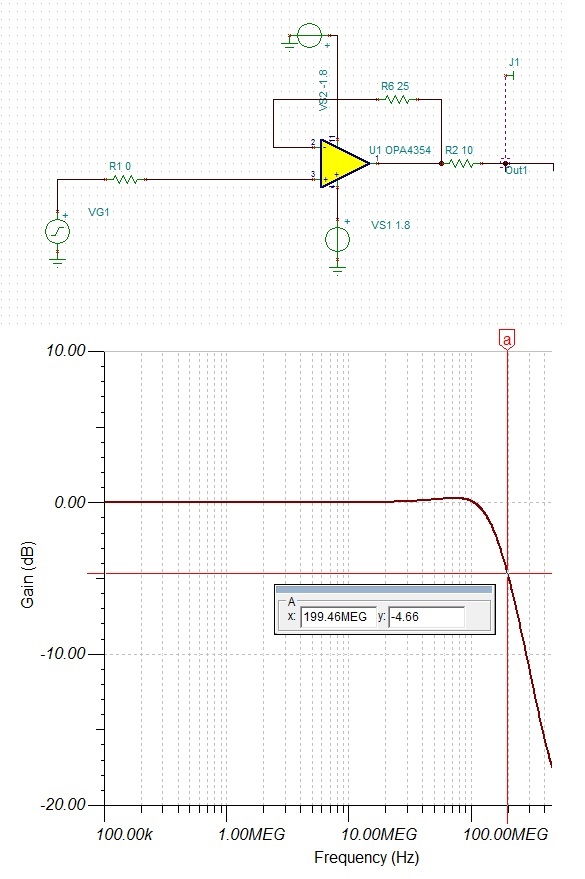Other Parts Discussed in Thread: BUF602
Hi Team,
our customer tested OPA4354 unit gain Bandwidth performance and find performance is not as good as datasheet.
they also try use TI -Tina to simulate the bandwidth and find bandwidth is less than 200MHz.
Would you help to check if any problem with customer simulation result? thanks.
Eddie


